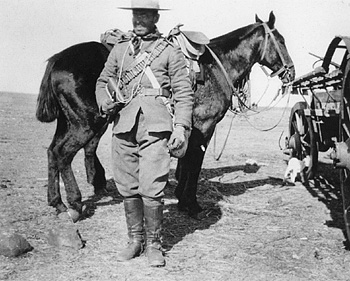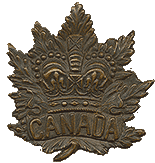Units
Strathcona's Horse

On 10 January 1900, Lord Strathcona and Mount Royal, the Canadian High Commissioner to the United Kingdom, offered to raise a regiment at his own expense for service in the British Army in South Africa. The Imperial authorities accepted his offer and thus was born one of the more unusual regiments of the South African War. While officially a British unit, the distinction was lost on the Canadian public, politicians, and the men serving in its ranks. It could hardly have been otherwise, as the unit was recruited entirely in the Canadian West. It was equipped by the Canadian government, quartered in Lansdowne Park, Ottawa, and paraded on Parliament Hill. The men cut impressive figures, resplendent in wide-brimmed Stetsons, and mounted on cow ponies with western saddles and lassos.
The unit was known as Strathcona's Horse. It was made up of three quadrons recruited in Manitoba, the territories that would later become the provinces of Saskatchewan and Alberta, and British Columbia. A cadre of mounted police joined Strathcona's Horse, among them the commanding officer, the legendary Superintendent Sam Steele.
Strathcona's Horse arrived in Cape Town on 10 April 1900, and was delayed there by an outbreak of disease among its horses. Finally, in June, the regiment joined General Buller's Natal Field Force and took part in the clearing of the Boer forces from that colony, and also in operations intended to link up with the main army in the Transvaal. On 5 July, at Wolve Spruit, a member of the unit, Sergeant Arthur Richardson, was awarded the Victoria Cross for rescuing a wounded and unhorsed comrade.
The regiment experienced a considerable amount of hard fighting during the remainder of its tour of operations. In January 1901, the Canada-bound unit stopped in London where the new monarch, King Edward VII, personally presented its members with their South African campaign medals, while Lord Strathcona proudly looked on.
Map Indicating the Movement of the Strathcona's Horse, 20 June - 1 September 1900
